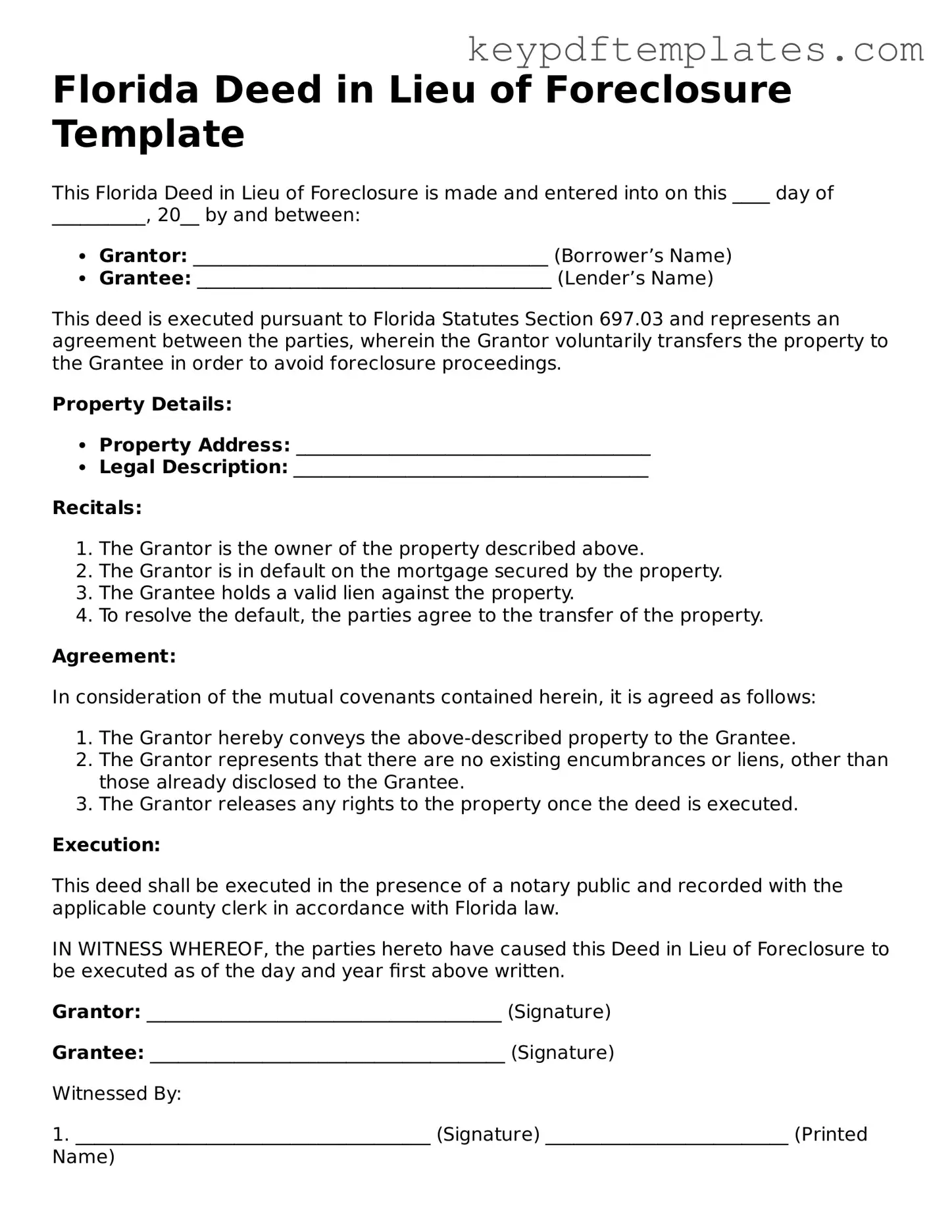Legal Deed in Lieu of Foreclosure Document for the State of Florida
A Deed in Lieu of Foreclosure is a legal document that allows a homeowner to transfer their property title to the lender in exchange for the cancellation of their mortgage debt. This process can provide a more amicable solution to foreclosure, helping homeowners avoid the lengthy and often stressful court proceedings. Understanding this option can empower individuals facing financial difficulties to make informed decisions about their property and financial future.
Modify Document Online
